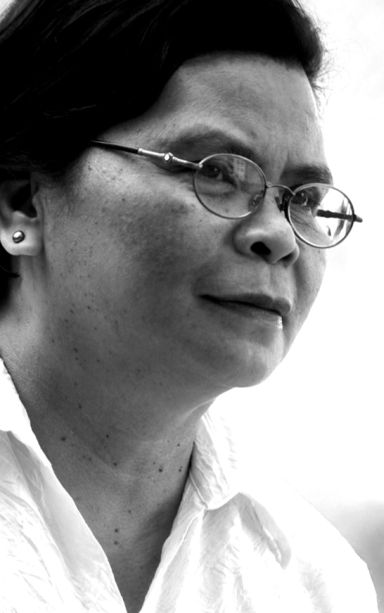
DELA CERNA
Fake news is not something new. During the election campaign of the 2016 elections, it was a powerful machinery for some candidates. But it was during the dictatorship that the country was bombarded with fake news, and it was done so blatantly. And I remember vividly one example which happened before the assassination of Ninoy Aquino.
My graduation for my MA in Asian Studies in UP Diliman was held on June 18, 1983 instead of March to coincide with the 75th anniversary of the foundation of the University of the Philippines. The graduation rites were held in the newly finished university gym located in the College of Human Kinetics because of the heavy rains. I remember trodding the muddy pavement from the main campus to the gym.
There was tension in the gym because of the rumors that the students (graduates and those attending) will stage a protest rally should Imee Marcos be included in the roster of graduates in the College of Law. During the ceremonies, we kept glancing at the upper boxes and balcony of the gym to see if there were streamers unfurled showing their protest. The graduation went on smoothly without any protest to our great relief. Still there was tension for fear of the protest. I remember leaving the gym in a hurry and I could not even greet my former students who also graduated to avoid being caught in a mayhem.
It was a public knowledge during my stay in the campus that Imee could not graduate because she lacked 35 units. Many of her batchmates were my dormmates in the campus. In the first place, we learned that her admission to the college was questionable because she did not finish her undergraduate studies at Princeton but was admitted just the same with intense pressure on the administration (whose admission policies are very strict). Thanks to the very few good men and women at the UP College of Law led by the late Haydee Yorac, the integrity of the college remained intact by not letting her graduate.
However, a few days later, I was shocked to watch on TV the “graduation” of Imee Marcos as magna cum laude at the Meralco Theater with Ferdinand and Imelda Marcos putting on the hood and cap on Imee. I could not believe what I saw. The next day, the “graduation” picture was all over the front pages of the national newspapers.
Fast forward to the present — the cast of characters involved in the making of fake news during the dictatorship are still around and have mastered the craft. But there is a new generation of makers of fake news who are out to destroy reputations and characters of people working hard for the good of the country. We should not tolerate this practice for the people especially the young are over entertained and underinformed.
* * *
A very good news I learned last week was the announcement of my good friend Jose Eleazar (Jobers) Bersales, director of the USC Press, that a book on the maritime history of Cebu to be written by no other than Dr. Resil B. Mojares will be among those to be published by the USC Press. Since my college days, I have always wanted to read about the maritime history of Cebu as a result of my being a major in history. In fact, there was a time when I was taking my master’s degree in Asian Studies that I wanted to write about Cebu’s maritime history. The dream strengthened after reading the book “1421: The Year China Discovered America.” The book was given to me by a former high school student who appreciated my class in Asian History.
The book is a significant contribution to the preparations for the Quincentennial of Magellan’s Voyage in 2021. This will also enrich the sources on Philippine History and especially local history.
There has been a suggestion floated about the plan to make the Shamrock Hotel or better known as the Compania Maritima building, which is perfectly located at the waterfront, into a maritime museum. This would be perfect and this is what Cebu lacks.
Still on publishing and preserving, Jobers in his most unique persuasive way has given me a tall order of writing the memories of my hometown Carcar before modern changes erase all of these. This sent me digging into my past columns in CDN to start the work. So far, it was only Concepcion Briones’ “Life in Old Parian” that preserved the memories of Parian, a very historic part of Cebu’s history. But before Jobers gave this interesting but challenging project, it was my friend Fe Naputo-Reyes who suggested that I should write about my memories of Luanluan, the place in Carcar where I come from and which I have been writing about. These two challenges are enough to drive me to do the job.